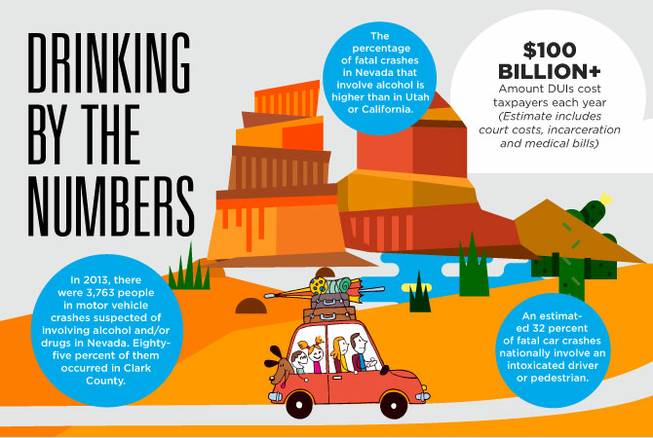
Sunday, Aug. 30, 2015 | 2 a.m.
Local law enforcement officials refer to the period between Memorial Day and Labor Day as the “hundred deadliest days” because of the increased number of vehicular fatalities that typically occur, many of which involve impaired drivers. While alcohol-related crashes are down more than 40 percent this year from last, there still has been an increase in overall fatalities to date in 2015 in Nevada.
Why is Labor Day weekend so dangerous?
As most people’s last hurrah of the summer, Labor Day weekend often includes excessive amounts of alcohol and many opportunities for party hopping. Last year in Nevada, four people died in alcohol-related crashes during the three-day weekend. While it may be tempting to pack your weekend itinerary with every party you can find, it’s important to have a reliable, sober means of transportation to get you everywhere you want to go, not just home at the end of the night.
If you’re drinking ...
Appoint a designated driver or plan to take cabs all day and night.
There also are local sober-ride programs worth checking out.
If you’re not drinking ...
Keep in mind that many people on the road might be drinking. Practice your defensive driving skills. If you see a driver showing obvious signs of intoxication, pull off the road and call 911.
Day drinking causes higher risk of dehydration
Pool parties, barbecues and picnics can offer ample opportunity to start drinking early, but in the Las Vegas heat, you need to be careful. It’s technically a myth that drinking during the day, especially under the hot sun, gets you drunk faster. However, there are contributing factors that certainly can make it feel that way. Alcohol can increase your risk for heat exhaustion and dehydration, both of which can make you feel sick and disoriented. Drinking water, especially while in the sun, is critical. It’s also helpful to use sunscreen, wear a hat and steal some time in the shade.
Facts and figures
• There are 1.4 million DUI arrests each year nationally. That accounts for less than 1 percent of the 159 million self-reported incidences of alcohol-impaired driving.
• The percentage of fatal crashes in Nevada that involve alcohol is higher than in Utah or California.
• Injuries suffered during a crash that involves impaired driving are significantly more likely to be serious or critical, compared to crashes that do not involve impaired driving.
How blood alcohol content works
A person’s BAC can depend on a variety of factors, including gender. Women generally have less water and more body fat than men, meaning alcohol remains in women’s blood longer. The following examples are based on the number of drinks a 160-pound man consumes in one hour.
• BAC of .02 percent (the limit for drivers under age 21): You start to feel relaxed, have an altered mood and experience some judgment loss. That results in a decline of visual and cognitive function, such as the ability to perform two tasks at once.
• BAC of .04 percent (the limit for drivers of commercial vehicles): Psychomotor performance is impaired and coordination is affected. You also experience a reduced ability to track moving objects, difficulty steering and reduced response time.
• BAC of .08 percent (the limit for drivers over age 21): Your cognitive function is rapidly declining, including your ability to assess and predict situations and judge danger. Your ability to self-regulate, concentrate and properly process information also is impaired.
• To figure out your BAC after you stop: Subtract 0.01 every 40 minutes to hour after you’ve finished drinking.
